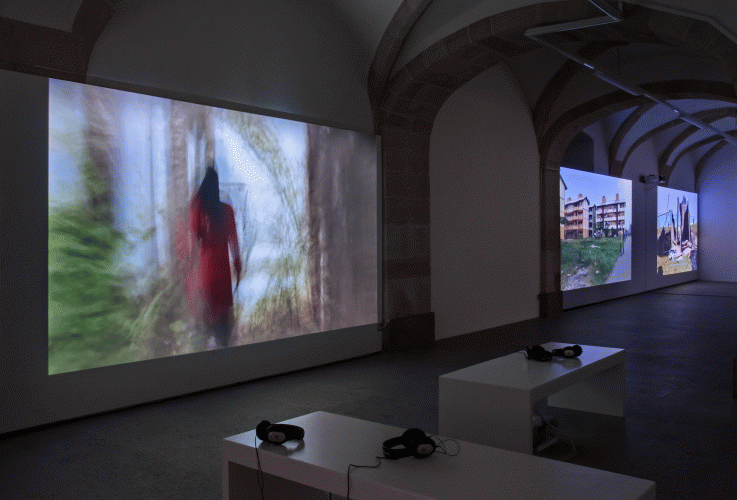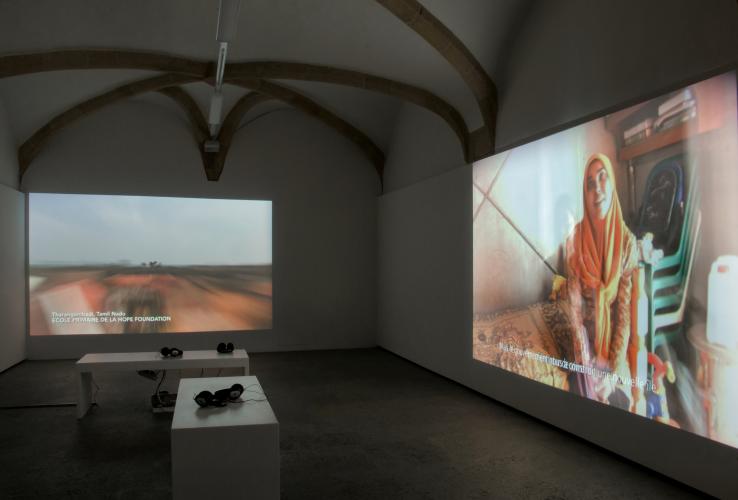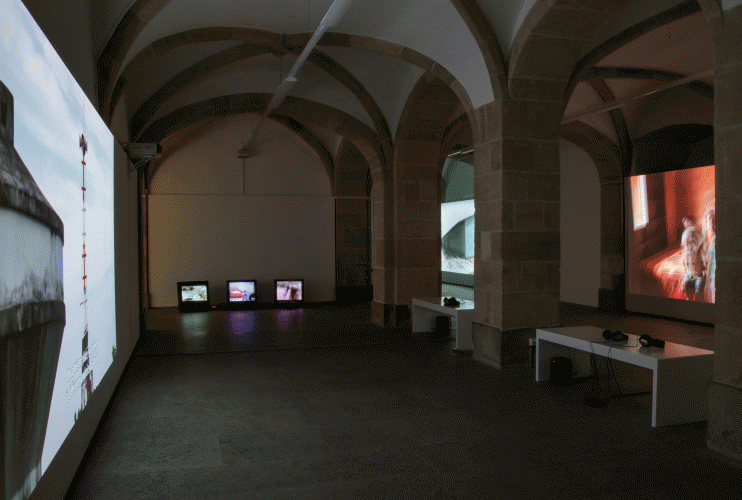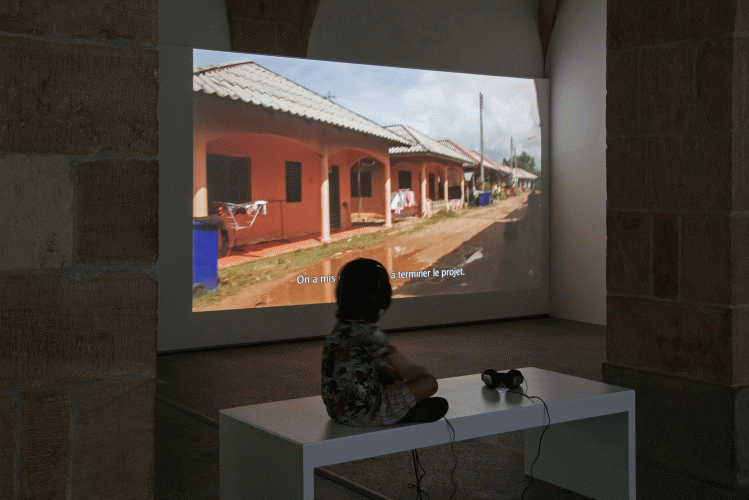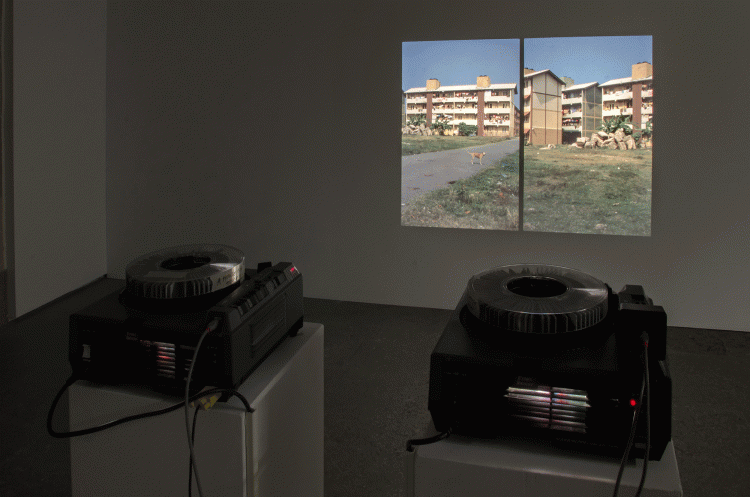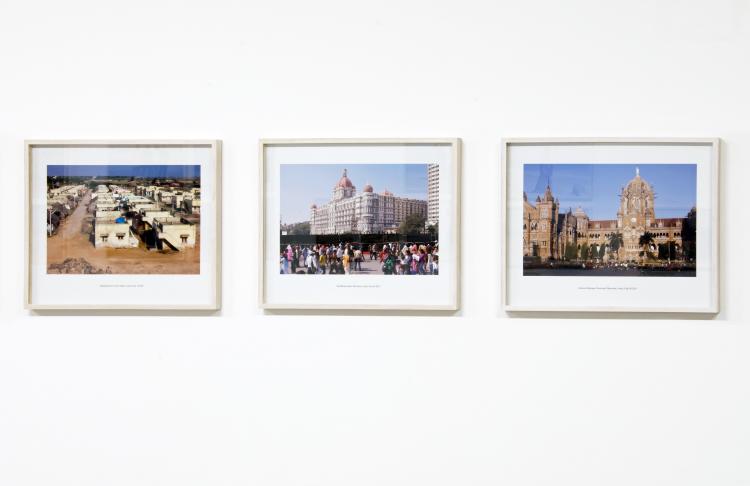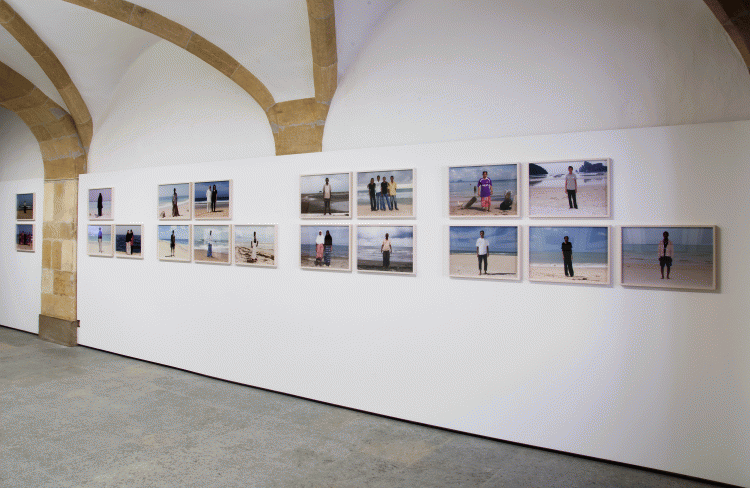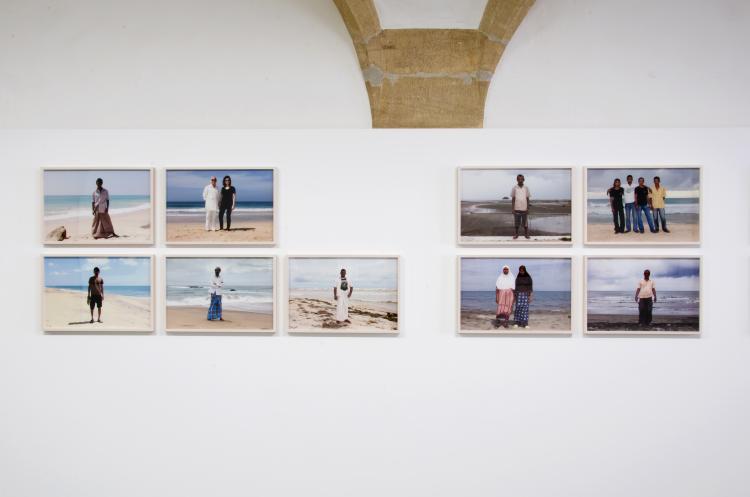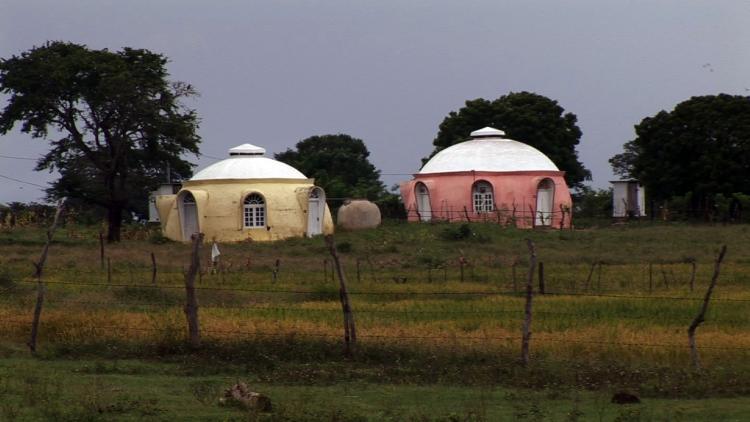5-channel video installation, HDV, 58 min total, 2012/2014 (with Heidrun Holzfeind)
Curated by Karine Tissot, Centre d'Art Contemporain, Yverdon
Installation view ©A.Honegger_CACY_Yverdon-les-Bains
The 2004 Indian Ocean Tsunami was one of the worst natural catastrophes in history. While international attention has faded, post-tsunami challenges continue to have an impact on affected communities. Six years later and just weeks before Fukushima, we looked at what has been achieved, what went wrong and what challenges remain. On a three month trip from December 2010 to February 2011 to the five countries most affected–Thailand, Aceh/Indonesia, Sri Lanka, Maldives and India–we investigated the current state of architecture built or reconstructed in the aftermath of the Tsunami. Using video and photography, we documented the long-term effects of the disaster through conversations with survivors, eyewitnesses, aid workers and rescue personnel. We also established a collection of footage of the disaster and the reconstruction efforts.
We were interested in how the flood of aid money has transformed the affected regions, rebuilt and refashioned local economies and shaped communities. How does collective and individual memory work, years after such a highly publicized media mega-event? How has architecture built after the Tsunami been able to respond to the individual needs of affected communities? How were these communities able to participate in the recovery process? How have these structures been adapted over time by their inhabitants, and how did architectural interventions alter societal and communal structures?
In some cases, locals were integrated in the reconstruction efforts and empowered to organize themselves to rebuild their livelihoods; effected communities have upgraded their living situation through the newly built housing but quite often the housing design has been culturally insensitive and well-meant efforts created a so-called "dependency" syndrome in which communities keep demanding outside assistance instead of becoming actively involved in improving their situation.
Commissioned by OK Centrum Linz
